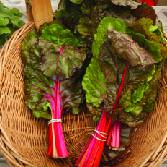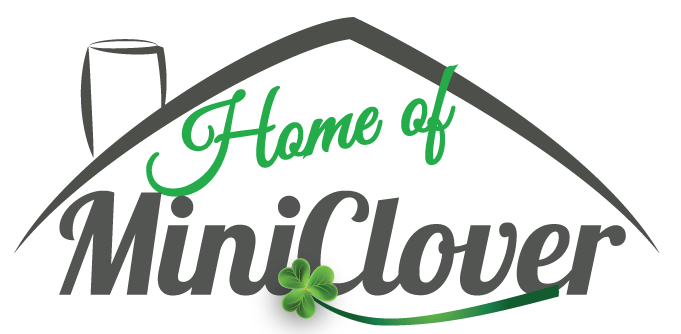-
CATEGORY ::
- All Seeds /
- All Flower Seeds

Hosta Seeds - American
SEASON
Perennial
USDA ZONES
3 - 8
HEIGHT
10 -18 inches
BLOOM SEASON
Summer
BLOOM COLOR
White
FOLIAGE COLOR
Mix
ENVIRONMENT
Partial shade to full shade
SOIL TYPE
Moist, well-drained, pH 6.1 - 7.3
DEER RESISTANT
No
HOUSE PLANT
Yes
LATIN NAME
Hosta american
SEASON
Annual
USDA ZONES
4 - 10
HEIGHT
6 - 8 inches
BLOOM SEASON
Mid spring to late summer
BLOOM COLOR
Mix
ENVIRONMENT
Full sun
SOIL TYPE
Best in rich, well drain soil
DEER RESISTANT
No
LATIN NAME
Leptosiphon hybrida
SEASON
Perennial
USDA ZONES
7 - 11
HEIGHT
28 inches
BLOOM SEASON
Spring to fall
BLOOM COLOR
Rosy purple
ENVIRONMENT
Full sun to partial shade
SOIL TYPE
Well drained soils, pH 6.6 to 7.5
DEER RESISTANT
Yes
SEASON
Perennial
USDA ZONES
7 - 11
HEIGHT
4 inches
WIDTH
12 - 18 inches
BLOOM SEASON
Early spring to early fall
BLOOM COLOR
Pink
ENVIRONMENT
Full sun to partial shade
FOOT TRAFFIC
Light
DEER RESISTANT
Yes
SEASON
Annual
USDA ZONES
3 - 11
HEIGHT
100 - 140 inches
BLOOM SEASON
Late spring to late summer
BLOOM COLOR
Mix
ENVIRONMENT
Full sun
SOIL TYPE
Well drained, pH 6.6 - 7.5
DEER RESISTANT
No
HOUSE PLANT
No
SEASON
Annual
USDA ZONES
4 - 9
HEIGHT
12 inches
BLOOM SEASON
Late summer to early fall
BLOOM COLOR
Mix
ENVIRONMENT
Full sun
SOIL TYPE
Moist, well-drained, pH 6.6 - 7.3
DEER RESISTANT
Yes
SEASON
Perennial
USDA ZONES
9 - 11
HEIGHT
120 inches
BLOOM SEASON
Mid summer to late fall
BLOOM COLOR
Orange, red, yellow
ENVIRONMENT
Full sun
SOIL TYPE
Sandy, well drained soil, pH 5.5 - 7.5
DEER RESISTANT
Yes
LATIN NAME
Mina lobata
SEASON
Annual
USDA ZONES
3 - 10
HEIGHT
12 inches
BLOOM SEASON
Mid summer
BLOOM COLOR
Pink
ENVIRONMENT
Full sun to partial shade
SOIL TYPE
Rich, moist soil, pH 6.6 - 7.5
DEER RESISTANT
Yes
HOUSE PLANT
Yes
LATIN NAME
Mimosa pudica
About...
Hosta (New American Hybrids) - You will be very happy that you grew Hosta plants from flower seeds! This mix makes a wonderful addition to the shady flower bed with their mix of foliage colors, including bi-colors, and textures. They are perfect for shady borders, around trees, and beds, and the varieties in this mix represent some of the newest and best in Hosta breeding today.
MORE FLOWER OPTIONS
Planting Directions
TEMPERATURE
60F
AVERAGE GERM TIME
28 - 35 days
LIGHT REQUIRED
Yes
DEPTH
Cover seed lightly with peat moss
SOWING RATE
3 - 4 seeds per plant
MOISTURE
Keep seed moist until germination
PLANT SPACING
30 inches
Hosta (New American Hybrids) - You will be very happy that you grew Hosta plants from flower seeds! This mix makes a wonderful addition to the shady flower bed with their mix of foliage colors, including bi-colors, and textures. They are perfect for shady borders, around trees, and beds, and the varieties in this mix represent some of the newest and best in Hosta breeding today. Hosta plants are a carefree choice for the shade garden, offering crisp, fresh bold color right up until frost.
Growing Hosta seeds is a simple procedure. Hosta seeds sprout nicely indoors, under normal house conditions, with temperatures running 60 - 70F. Use a "peaty" starter mix and just lightly cover the seed with peat moss. Keep the seed moist but not saturated until germination. Sow seeds 8 - 10 weeks before frost season ends. Hosta care includes keeping the plant moist throughout the hot months of the summer. As a rule, they need 1 inch of water every week.
Common Questions
What is eating my hosta plant?
There are many possibilities, but the most common are deer or slugs. Check for slugs at night. If it is eaten to the ground, it is probably deer.
When is the best time to divide my hosta?
They can be divided any time, except in hot dry weather. However, late summer or early fall is the best time to divide your hosta plants.
Can hostas be planted in the sun?
No, they perform best in the shade. Planting them in the sun will cause leaf burns.
Can I use hosta as cut flowers?
Yes, and the foliage also makes a nice addition to an arrangement offering different shades of green and texture to the arrangement.
Can I grow hosta in a container?
Yes, hostas are great for containers. Use a commercial planting mix rather than garden soil and be sure they have sufficient moisture.
How can I use hostas in the landscape?
Most commonly found in shade gardens, hostas enhance dim spaces with their decorative leaves. These plants thrive when planted in clusters or large groupings, serving well as background elements or standalone features in shady borders or woodland settings. Hostas can also be attractive potted plants and are occasionally kept indoors as houseplants, but they demand specific attention to flourish.
Planting Directions
TEMPERATURE
55 - 65F
AVERAGE GERM TIME
14 - 21 days
LIGHT REQUIRED
Yes
DEPTH
Surface sow seed and light cover no more than 1/8 inch deep
SOWING RATE
3 - 5 seeds per cell or approximately 5000 seeds covers 100 square feet
MOISTURE
Keep seeds moist until germination
PLANT SPACING
8 inches
Leptosiphon Mix (Leptosiphon Hybrida French Hybrids Mix) - Start Leptosiphon seeds to start these dainty little flowers. Leptosiphon French Hybrids has the synonymous botanical name Linanthus androsaceus. This low-growing annual has fern-like foliage and hundreds of sweet little half inch star-shaped flowers that shine out from the foliage. The colors are mixed and bright in shades of rose, yellow, orange and cream. Leptosiphon uses include edging the front of the flower bed, containers, edging a pathway, or as a ground cover. Commonly known as False Baby Stars, this annual is lovely if it is allowed to spill over the edges of rocks or containers. It makes a carpet of color and is stunning!
Grow Leptosiphon seeds directly outside in a prepared seedbed after frost danger has passed. Press the flower seed into the soil and lightly cover. False Baby Stars flowers perform best in full sun, and they prefer rich, well-draining soil.































